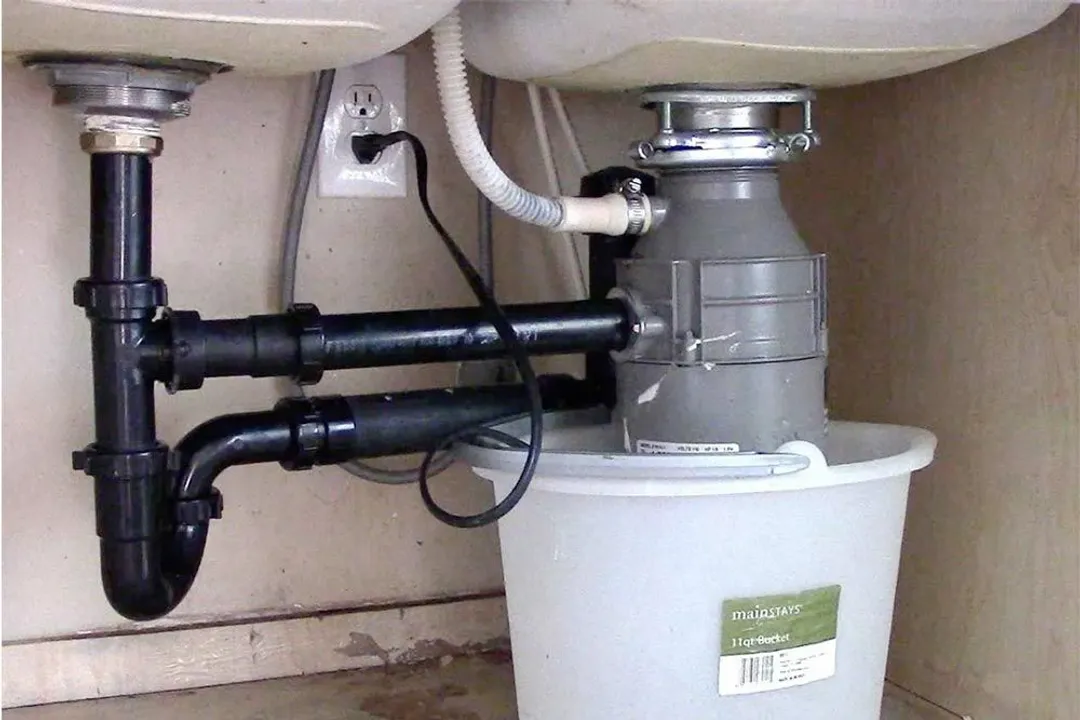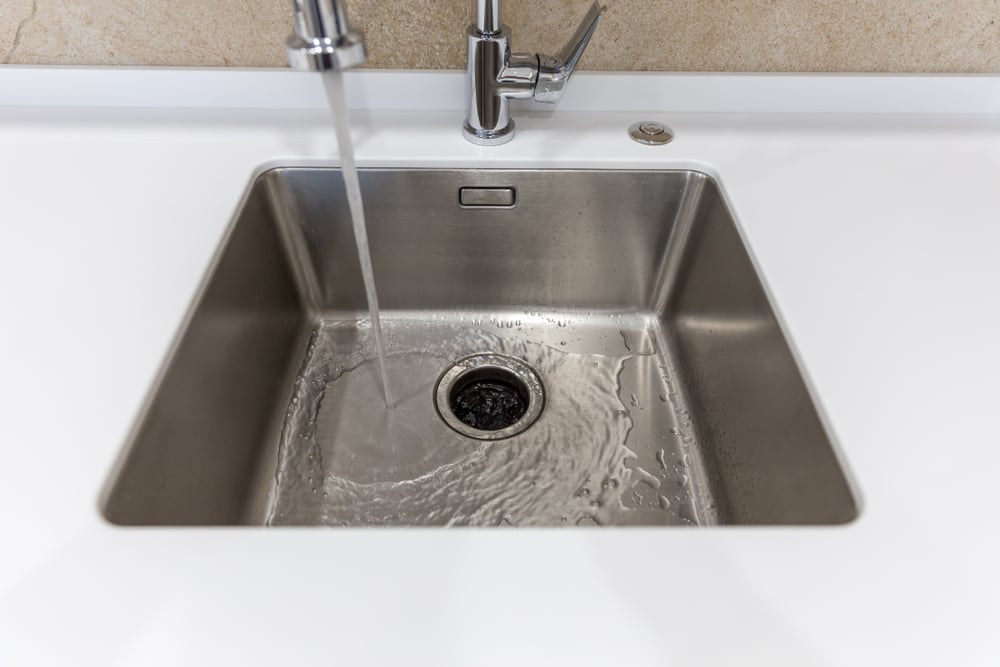This post following next in relation to Garbage Disposal Leaking From Bottom is totally attention-grabbing. Read it yourself and see what you think about it.

Waste disposal unit are essential cooking area home appliances that help in throwing away food waste successfully. Nonetheless, a dripping garbage disposal can be an irritating and messy issue to take care of. Luckily, numerous leakages can be repaired easily with a couple of simple steps. In this article, we will review just how to fix a dripping waste disposal unit properly.
Intro
Waste disposal unit are mounted under kitchen sinks and are created to shred food waste right into smaller items, enabling it to go through the pipes system quickly. While these devices are normally trustworthy, leakages can happen in time because of damage, loosened connections, or damages to the unit.
Step-by-Step Overview to Taking Care Of a Leaking Waste Disposal Unit
Turn Off the Power
Before attempting any kind of repair services, make certain that the power to the waste disposal unit device is switched off to avoid the danger of electrical shock.
Situate the Leak
Determine the exact location of the leak and figure out the cause
Tighten up Connections
Utilize a wrench to tighten any type of loose links in between the disposal unit and the plumbing system.
Replace Seals or Gaskets
If the leakage is because of used seals or gaskets, remove the old components and change them with brand-new ones.
Patching Cracks or Openings
For splits or holes in the disposal system, use epoxy or a suitable patching material to seal the damaged location.
Recognizing the Source of the Leak
Before trying to deal with a leaking waste disposal unit, it is vital to identify the resource of the leakage. This can normally be done with aesthetic examination or by conducting basic tests.
Visual Evaluation
Check the waste disposal unit unit meticulously for any kind of indicators of water leakage. Pay close attention to areas around seals, gaskets, and link points.
Checking for Leakages
One way to check for leaks is by running water via the disposal device and checking for any type of visible indications of leakage.
Typical Reasons For Leakages in Garbage Disposals
Worn Seals and Gaskets
Seals and gaskets play an important duty in avoiding water from dripping out of the garbage disposal. Over time, these elements can degrade, leading to leaks around the disposal system.
Loose Connections
The connections in between the garbage disposal and the pipes system can become loose over time, triggering water to leakage out throughout procedure.
Splits or Holes in the Disposal Unit
Physical damages to the garbage disposal, such as fractures or holes in the real estate, can additionally lead to leaks.
Devices and Materials Needed for Dealing With a Dripping Garbage Disposal
Prior to starting the repair work procedure, collect the required tools and products, consisting of a screwdriver, flexible wrench, plumber's putty, replacement seals or gaskets, and epoxy or patching material for fixing splits or openings.
Checking the Waste Disposal Unit After Repair Work
When the repair work is complete, evaluate the garbage disposal by running water with it to make sure that the leakage has actually been resolved.
Preventive Maintenance Tips to Prevent Future Leakages
To prevent future leakages, it is essential to execute regular upkeep on your garbage disposal. This includes keeping it tidy, staying clear of putting non-food products or tough items down the disposal, and regularly checking for leaks or other issues.
Verdict
In conclusion, fixing a leaking waste disposal unit is a fairly uncomplicated procedure that can be completed with fundamental devices and materials. By adhering to the actions laid out in this short article and practicing preventive upkeep, you can maintain your garbage disposal in good working problem and stay clear of pricey repairs in the future.
What to Do About a Leaking Garbage Disposal
A leaking garbage disposal often goes unnoticed until you confront a sopping cabinet, a foul-smelling puddle, or an audible drip-drip-drip from the unit. The fix can be frustrating, too, because the leak can stem from a number of components in the system. Fortunately, with a little sleuthing, you can zero in on the leak and—depending on the exact location—stop the icky oozing and repair the component that caused it. Worst case scenario, if it turns out that the garbage disposal must be replaced, installing a new one is a reasonable do-it-yourself task for those with basic plumbing skills. Read on to keep the cash you’d otherwise hand over to a pro.
Prepare to find the leak
Prior to testing the garbage disposal for leaks, unplug it at the wall outlet and turn off the power from the breaker box to prevent electrical shock. Then insert a watertight sink stopper into your sink drain and wipe the unit dry with a clean cloth. In any handy container, mix a few drops of food coloring into a few cups of water, and pour the dyed water onto the sink stopper to help you locate the leak.
Investigate the source
the top, where the disposal meets the sink drain the side, where the dishwasher hose or main drain pipe connects to the disposal or the bottom of the unit Inspect each of these locations while gliding a light-colored rag over the unit; the dyed water will readily show on the rag and reveal the location of the leak. If a leak isn’t immediately apparent, remove the sink stopper and pour a few more cups of dyed water down the sink drain, then check for leaks again. Leaks near the top of the unit are more likely to show themselves while the sink is plugged, while side and bottom leaks are more noticeable while the sink is unplugged.
The metal sink flange that sits directly inside the sink drain is typically sealed around the top with plumber’s putty (a clay-like sealant) and then secured from under the sink with bolts. If the plumber’s putty deteriorates, or the bolts loosen, the flange can no longer form a watertight seal between the sink drain and the disposal—which could cause a leak at the top of the unit.
To reseal the leaky flange, you must first detach the garbage disposal. Start by loosening the screws securing the main drain pipe to the disposal, then loosen the screws in the metal clamp securing the dishwasher hose to the disposal and detach the drain pipe and dishwasher hose from the disposal. Loosen the screws in the mounting ring that connects the disposal to the metal mounting assembly beneath the sink, then pull down the disposal and carefully set it on a clean, dry surface. Loosen the bolts in the mounting assembly with a wrench, then pull down the mounting assembly and set it near the disposal.

Do you really like more info about Tips on Fixing a Leaking Garbage Disposal? Try leaving feedback further down. We would be pleased to listen to your opinions about this write-up. We hope to see you back again later on. Loved our blog posting? Please share it. Let another person discover it. Many thanks for your time. Visit us again soon.
Call Today